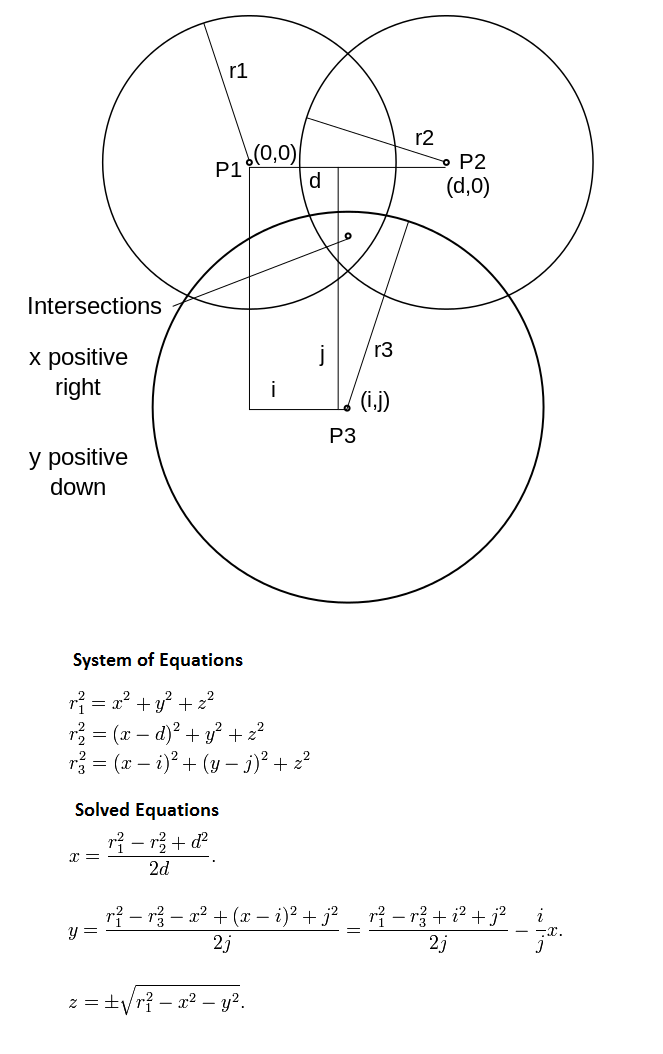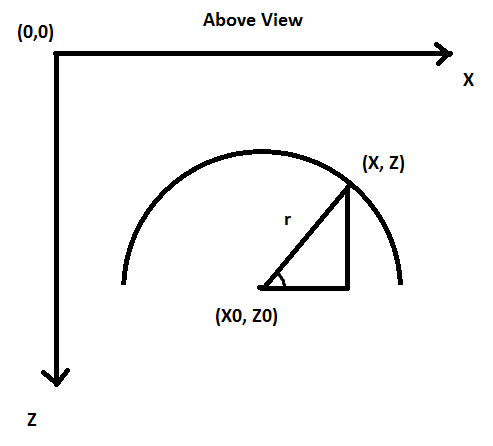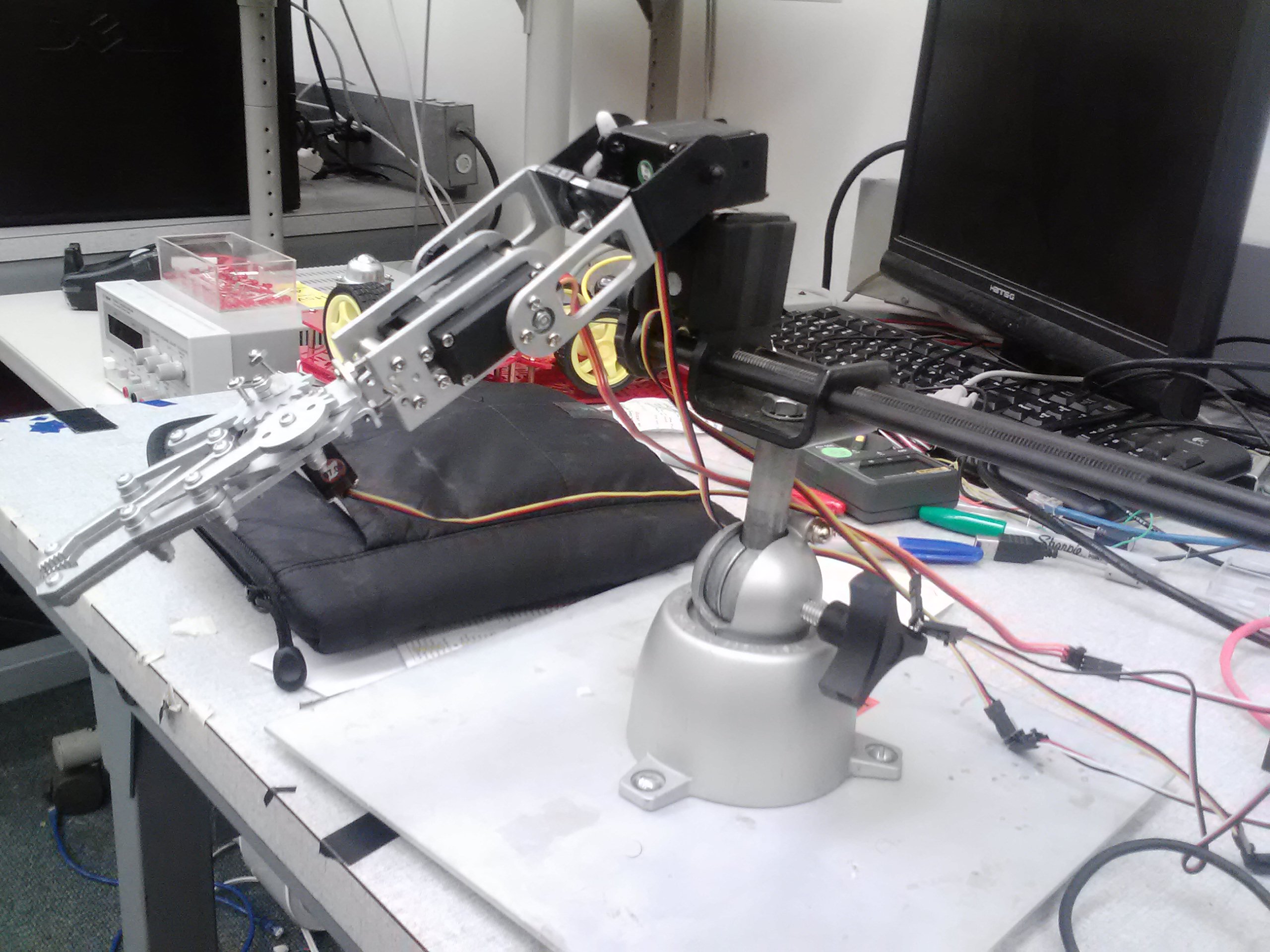Gesture Arm Robot
Description
The purpose of this project is to control a robotic arm through only gesture controls. This is mostly a proof-of-concept to see how far the idea can go. Overall, while the arm does respond to the way the hand moves, using trilateration and inverse kinematics alone may be to much for the sensor to handle, and if future work is done, may require the addition of swiping motion and a sort of feedback control to better stabilize the robot arm.
Components
- mbed (LPC1768)
- SI1143 Gesture Sensor
- SparkFun Robotic Arm
- 4 servo motors
- 2 Hitec HS-322HD
- 1 DGServo S06NF STD
- 1 Hitec HS-85BB+
- 4 AA batteries
- Hitachi HD44780 LCD
- Some sort of base
- Header wires
Libraries
This is my own library needed to control the gesture sensor.
Import librarySI1143
Starting library to get the SI1143 Gesture Sensor to work. Currently only works in forced conversion mode.
This is the most common LCD library, used mainly for debugging and outputting certain data.
Import libraryTextLCD
TextLCD library for controlling various LCD panels based on the HD44780 4-bit interface
Setup
Setting up the parts is simple enough. Place the robot arm on the chosen base and make sure it is held tight. Starting at the base of the arm and beginning at the start of the servo list, the first servo is the spin servo, the second is the shoulder servo, the third is the elbow servo, and the fourth is the gripper servo. The LCD is used to display debugging information such the angles for the first three servos and the x, y, and z position of your hand.
Basic LCD Hookup
| Pin number | TextLCD pins | mbed pins |
|---|---|---|
| 1 | GND | 0V |
| 2 | VCC | 3.3V, though 5V is valid |
| 3 | VO | 0V, via 1k resistor |
| 4 | RS | p15 |
| 5 | RW | 0V |
| 6 | E | p16 |
| 7 | D0 | not connected |
| 8 | D1 | not connected |
| 9 | D2 | not connected |
| 10 | D3 | not connected |
| 11 | D4 | p17 |
| 12 | D5 | p18 |
| 13 | D6 | p19 |
| 14 | D7 | p20 |
The gesture sensor is controlled through I2C, make sure it placed somewhere on the board where there is little to no obstruction.
Basic Hookup
| SI1143 pins | mbed pins |
|---|---|
| GND | 0V |
| VIN | 3.3V |
| INT | not connected |
| SCL | p27, via 4.7k resistor to VIN |
| SDA | p28, via 4.7k resistor to VIN |
To hookup the arm, make sure there are at least four PwmOut pins available (P21-P26). Use header wires to extend the distance between the arm and the mbed. The servos need their own power source, as the servos initial startup will short the mbed. Make sure that you ground the separate power to the same source used by the mbed, else the servos will just spin in one direction. Each servo requires a signal, a Vin, and a ground, though the colors on the wires may vary between servos, see the second reference source if you are not sure which wire is which.
Theory
Trilateration
The first step is to get the 3 LED sensor measurements, which are based off the distance between the LED and the object. The value that is outputted from the sensor is arbitrary and becomes larger the closer the object, thus, a ratio formula must be applied to convert the value into cm and to decrease in value the further away the object is.
Afterward, 3D trilateration must be used to create x, y, and z values in a Cartesian coordinate space. Trilateration works by creating a sphere from one of the LEDs to the object, then another sphere from another LED to the object. These overlapping spheres creates a circle, and one final sphere created from the last LED creates two point of contact, in which the positive value is taken.

Spin Rotation
The second step is to get the angle for the spin servo. Looking from the top, an x-z plane can be imagined, where the arm base can be place. Trigonometry (arctangent) can then be used to solve the angle needed for the shoulder servo.

Inverse Kinematics
The final step involves inverse kinematics, since a determined point needs to be reached but the angles are unknown. Before starting, two things need to be done. One is to get the polar length of r from the previous section, allowing work to be done in a 2D space, Two is to adjust our arccosine numerator when it wraps around, to avoid non attainable numbers. Angle 2 is the elbow servo that is solved first, then angle 1 is the shoulder servo that is solved last. Note that in the code that the negative used to attain angle 1 was removed.

Pulse Conversion
Each servo type requires a specific pulsewidth in order to rotate to the appropriate angle. These are the values that were attained, where i is the angle ranging from 0 (max counter-clockwise position) to 180 (max clockwise position).
Conversion Chart
| Servo brand | Pulsewidth(us) |
|---|---|
| Hitec HS-322HD | 800 + (i*20)/3 |
| DGServo S06NF STD | 2300 - (i*95)/9 |
| Hitec HS-85BB+ | 600 + (i*10) |
Gripper Control
This servo works independently from the other servos, and instead uses the raw values from the sensor. By pushing forward and coming back with your hand, the gripper will either open or close. The code is programmed so that if the gripper is opened, LED1 on the mbed lights up.
Final Setup
Program Code
Import program
00001 #include "mbed.h" 00002 #include "SI1143.h" 00003 #include "TextLCD.h" 00004 00005 #define PI 3.14159265 00006 00007 DigitalOut led1(LED1); 00008 SI1143 sensor(p28, p27); 00009 PwmOut spin(p21); 00010 PwmOut shoulder(p22); 00011 PwmOut elbow(p25); 00012 PwmOut grip(p26); 00013 TextLCD lcd(p15, p16, p17, p23, p19, p24); 00014 Serial pc(USBTX, USBRX); 00015 00016 int main() 00017 { 00018 //LED sensor, bottom-left, top-left, bottom-right 00019 int s1,s2,s3; 00020 double sense1,sense2,sense3; 00021 00022 //distance between sensors in cm 00023 double diff = 5; 00024 00025 //sensed and stored coordinates 00026 double xs,ys,zs; 00027 double x=45,y=5,z=50; 00028 00029 //arbitrary position for arm 00030 double stx=60,sty=25,stz=100; 00031 00032 //length of arm segment 00033 double len12=7.5, len23=15; 00034 00035 //polar distance 00036 double r; 00037 00038 //check values 00039 double root, tproot, wproot; 00040 int timer=0; 00041 00042 //motor 1,2,3 00043 double angle_sp,angle_sh,angle_el; 00044 00045 //Setup 00046 lcd.cls(); 00047 led1 = 0; 00048 grip.pulsewidth_us(700); 00049 sensor.bias(4,20); 00050 wait(1); 00051 00052 while(1) 00053 { 00054 //Read each led sensor 00055 s1 = sensor.get_ps1(4); 00056 s2 = sensor.get_ps2(4); 00057 s3 = sensor.get_ps3(4); 00058 sense1 = /*1000 - */1500/s1; 00059 sense2 = /*1000 - */1500/s2; 00060 sense3 = /*1000 - */1200/s3; 00061 00062 //Control for gripper 00063 if (((s1>800) || (s2>600) || (s3>600)) && !timer) 00064 { 00065 timer=20; 00066 if (!led1) 00067 { 00068 led1 = 1; 00069 grip.pulsewidth_us(1350); 00070 } 00071 else 00072 { 00073 led1 = 0; 00074 grip.pulsewidth_us(700); 00075 } 00076 } 00077 timer--; 00078 if (timer < 0) timer=0; 00079 00080 //Set outer limit 00081 if (sense1>110) sense1 = 110; 00082 if (sense2>110) sense2 = 110; 00083 if (sense3>110) sense3 = 110; 00084 00085 //Trilateration for x 00086 xs = 40 + ((pow(sense1,2) - pow(sense3,2) + pow(diff,2)) / (2*diff)); 00087 if (xs<5) xs = 10; 00088 if (xs>95) xs = 90; 00089 00090 //Trilateration for y 00091 ys = -sty + ((pow(sense1,2) - pow(sense2,2) + pow(diff,2)) / (2*diff)); 00092 if (ys<-50) ys = -40; 00093 if (ys>50) ys = 40; 00094 00095 //Trilateration for z 00096 root = pow(sense1+60,2) - pow(y,2) - pow(x,2); 00097 zs = sqrt(root); 00098 if (zs>70) zs = 70; 00099 00100 //Tolerance level to store x,y,z 00101 if (abs(x-xs) <= 7) x = xs; 00102 if (abs(y-ys) <= 10) y = ys; 00103 if (abs(z-zs) <= 6) z = zs; 00104 00105 //Used for debugging 00106 //x=60; 00107 //z=15; 00108 //for(y=-90;y<=90;y+=10){wait(1); 00109 00110 //Angle for spin motor, converted into degrees 00111 angle_sp = atan((stz - z)/(x - stx)) * 180/PI; 00112 if (angle_sp < 0) 00113 angle_sp += 180; 00114 angle_sp = 180 - angle_sp; 00115 00116 //Polar distance and arcosine wrapping 00117 r = sqrt(pow(x - stx,2) + pow(stz - z,2)); 00118 wproot = 2*pow(r,2) - pow(len12,2) - pow(len23,2); 00119 while (wproot > 225) 00120 wproot -= 225; 00121 while (wproot < -225) 00122 wproot += 225; 00123 00124 //Angles for elbow motor first, then shoulder motor 00125 angle_el = acos(wproot/(2*len12*len23)); 00126 tproot = len12 + len23*cos(angle_el); 00127 angle_sh = (-r*len23*sin(angle_el) + y*tproot)/(y*len23*sin(angle_el) + r*tproot); 00128 00129 //Angles for shoulder and elbow motor, converted into degrees 00130 angle_sh = 180 - (angle_sh * 180/PI); 00131 angle_el = 90 + (angle_el * 180/PI); 00132 00133 //Covert degrees to pulses to appropriate motors 00134 spin.pulsewidth_us(800 + (angle_sp*20)/3); 00135 shoulder.pulsewidth_us(800 + (angle_sh*20)/3); 00136 elbow.pulsewidth_us(2300 - (angle_el*95)/9); 00137 00138 //Debug info 00139 printf("%.1f %.1f %.1f\r\n",xs,ys,zs); 00140 //printf("%.1f %.1f %.1f\r\n",x,y,z); 00141 //printf("%d %d %d\r\n",s1,s2,s3); 00142 lcd.cls(); 00143 lcd.printf("sp:%.0f sh:%.0f\nel:%.0f ",angle_sp,180-angle_sh,angle_el); 00144 lcd.printf("%.0f,%.0f,%.0f",x,y,z);//} 00145 //printf("%.2f %.2f %.2f\r\n\n",angle_sp,angle_sh,angle_el); 00146 } 00147 }
Robot Arm

mbed Platform

Note that the SD card is not used here.
Demo Video
References
- http://mbed.org/users/GAT27/notebook/si1143-gesture-sensor/
- http://www.horrorseek.com/home/halloween/wolfstone/Motors/svoint_RCServos.html#ServoConnectors
- http://en.wikipedia.org/wiki/Trilateration
- http://www.cs.princeton.edu/courses/archive/fall99/cs426/lectures/kinematics/sld008.htm
- http://en.wikipedia.org/wiki/Servo_control
Please log in to post comments.
